Push notifications can be an incredibly useful feature. They help inform you about updates and offers, and provide critical information almost instantly. However, dealing with a lot of pop-up messages across all of your devices can be overwhelming.
Fortunately, you can customize and curate which push notifications you see on your devices and browsers.
In this article, we’ll show you how to turn off post notifications across most major Operating Systems (OS) and web browsers. Let’s get started!
Prefer to watch the video version?
What Are Push Notifications?
Push notifications are pop-up messages that show up on your devices to provide quick notices. On mobile devices, for example, push notifications appear when you receive text messages or when an application needs your attention:

Push notifications aren’t limited to mobile devices. If you use Windows or macOS computers, you’ll also see these elements regularly. Some examples include:
- Software update notices
- Notifications from web browsers
- New email alerts
It’s important to understand that, in most cases, push notifications work in two ways. There are ones that you can configure and disable at the OS level, and others that operate on an app-to-app basis.
For example, some websites will ask you if you want to receive push notifications through your browser:

In the following sections, we’ll show you how to disable push notifications from both angles, covering each major browser and OS.
How to Turn Off Push Notifications at the OS Level
Below, we’ll walk you through how to turn off post notifications for Windows 10, macOS, Android, and iOS. Let’s start with Windows.
How to Turn Off Push Notifications on Windows 10
Windows enables you to disable push notifications completely, mute them temporarily, or turn them off for specific apps. To reach Windows’ notifications settings, open the Start menu, and go to Settings > System > Notifications & Actions.
To disable notifications altogether, turn off the option that reads Get notifications from apps and other senders:

Since push notifications can contain critical information, you might want to disable notices for specific applications only (those that you tend to ignore).
To do so, scroll down until you reach the Get notifications from these senders settings section. There, you can turn off push notifications for each installed application:
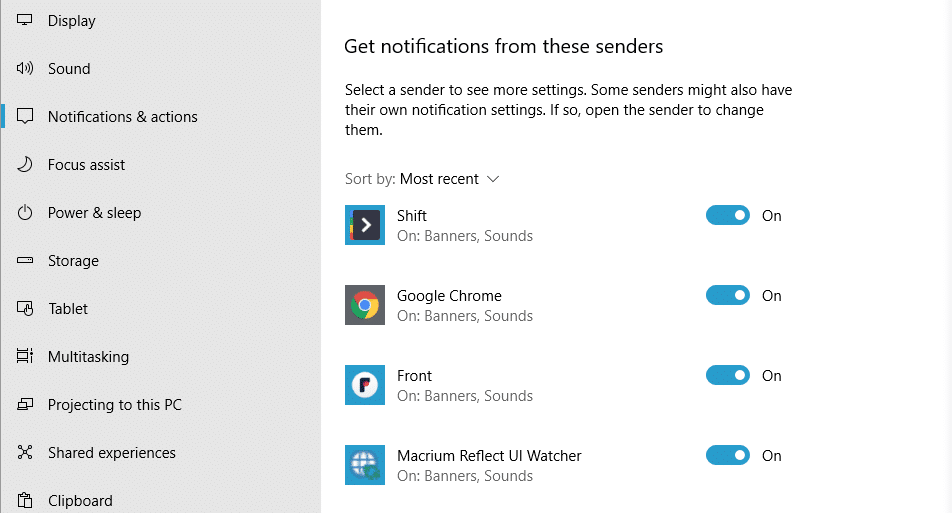
Finally, Windows includes a feature called ‘focus assist’ that gives you the option to temporarily disable or mute push notifications.
To use focus assist, click on Focus assist settings under the Notifications options. On the next screen, you’ll be able to decide which notifications to disable and when the feature should come into play:
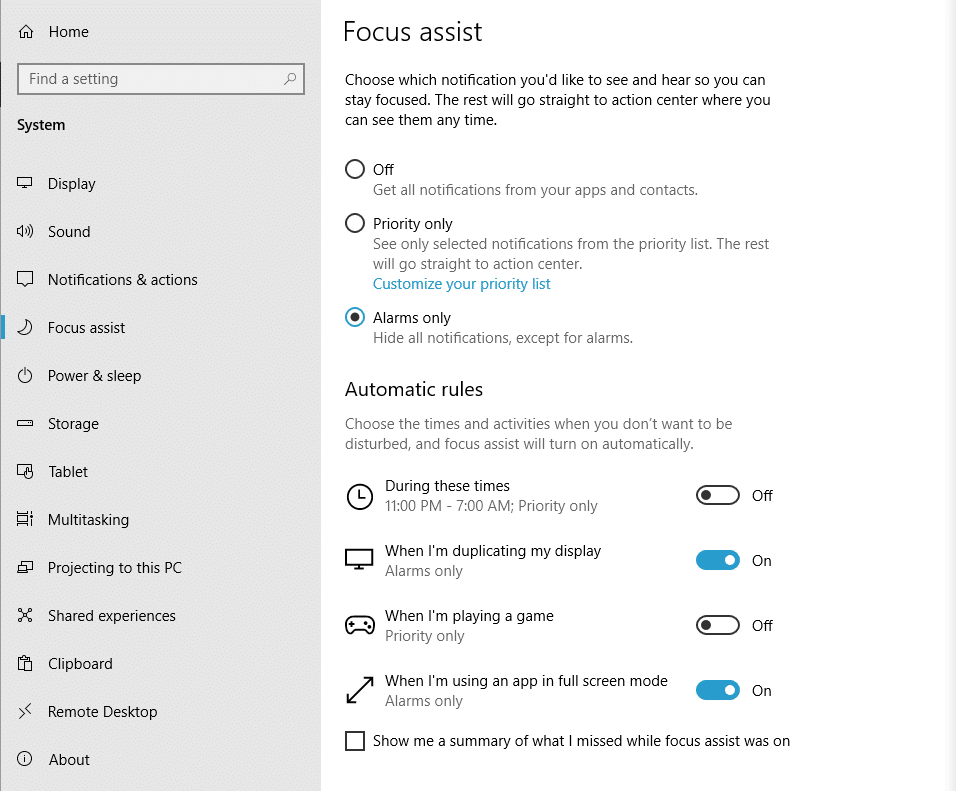
Overall, Windows provides you with plenty of options to manage push notifications. The key is figuring out which applications are worth receiving alerts from, and which would only serve as a distraction.
How to Disable Push Notifications on macOS
If you use macOS, you can both pause or disable notifications, depending on your preference. To stop all notifications, open the Apple menu and go to System Preferences > Notifications.
You’ll see a list of all the apps that can send you notifications, and you can disable those permissions for each individual item:

To pause notifications, you can enable the Do Not Disturb setting on the left, under the same Notifications window:
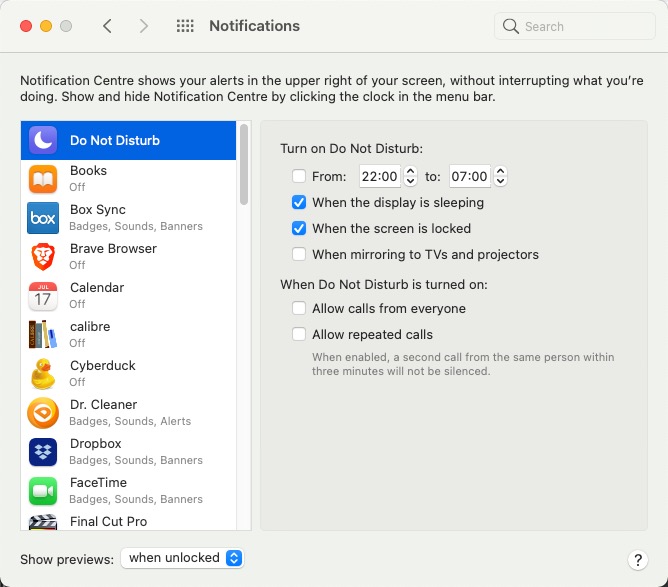
While the Do Not Disturb setting is on, notifications won’t interrupt your work. To access them, you’ll need to open the Notifications Center.
This is where they’ll accumulate until you unpause notifications.
How to Disable Push Notifications on iOS (iPhone and iPad)
iOS enables you to both disable push notifications entirely, or turn them off for individual apps.
To access iOS notifications settings, go into the Settings > Notifications menu.
At the top of the menu, you’ll see the Show Previews option. Setting that to Never will turn off all push notifications:
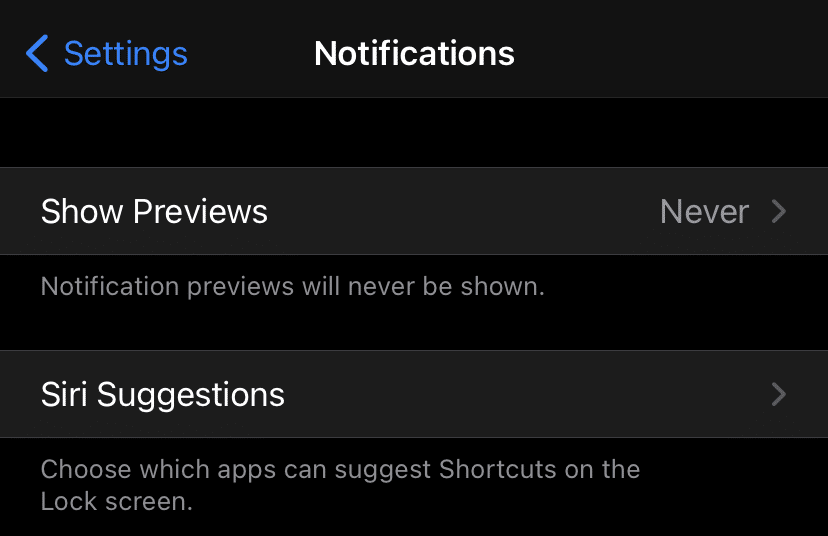
If you want to disable notifications for specific apps only, don’t touch that previous setting. Instead, scroll down to the Notifications menu and click on an individual app:
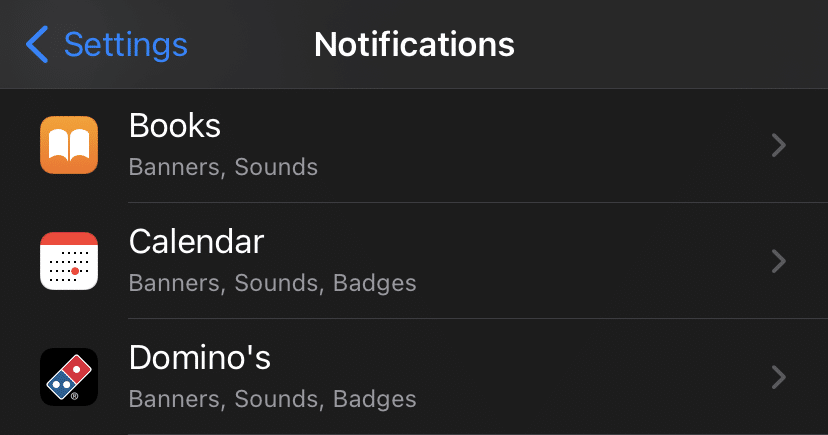
From that list, you can configure each app’s notifications settings or disable them. This feature comes in handy for filtering out messages you’re not interested in.
How to Disable Push Notifications on Android
You can disable push notifications on Android by going into the Settings > Notifications options. Similar to iOS, Android lets you turn off push notifications for individual apps or use a ‘Do not disturb’ mode.
To disable notifications for specific apps, scroll down to the Recently sent menu and press the More button underneath:
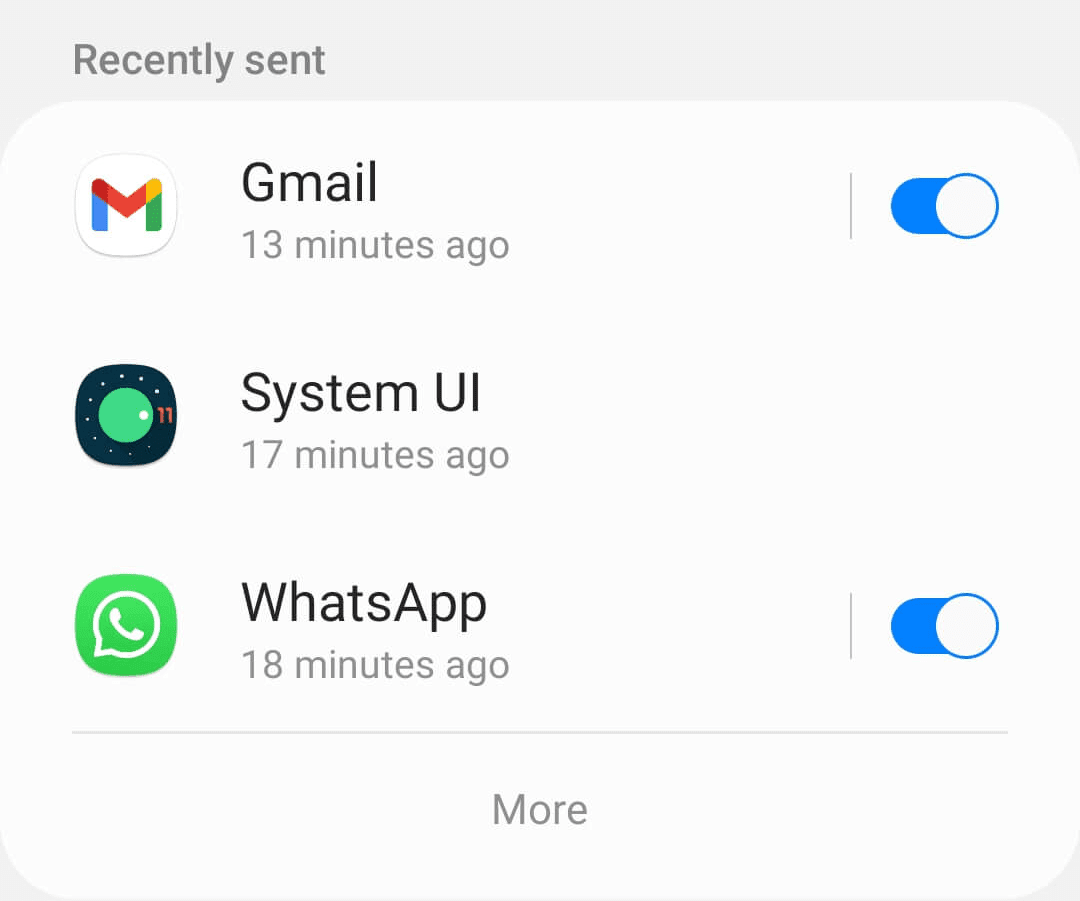
On the next screen, you can use the buttons on the right to turn off notifications for any app that you want:

To enable the do not disturb mode in Android, return to the Notifications screen and find the Do not disturb button located at the bottom. On the next screen, you can turn on the Do not disturb setting, and configure how long it lasts for:

Android’s do-not-disturb mode.
This screen also includes options for configuring exceptions to the do-not-disturb rules. For example, you can make it so that notifications from certain applications will still show up on your screen.
How to Turn Off Push Notifications for Web Browsers
For this section, we’ll show you how to turn off push notifications for Google Chrome, Safari, Mozilla Firefox, and Microsoft Edge. Let’s start with Chrome.
How to Turn Off Push Notifications in Google Chrome
If you use Chrome, you can prevent websites from asking for permission to send push notifications, which essentially disables them altogether. The browser also lets you block notifications for specific websites.
To access those settings, go to Settings > Privacy and security, and select the Site Settings option:
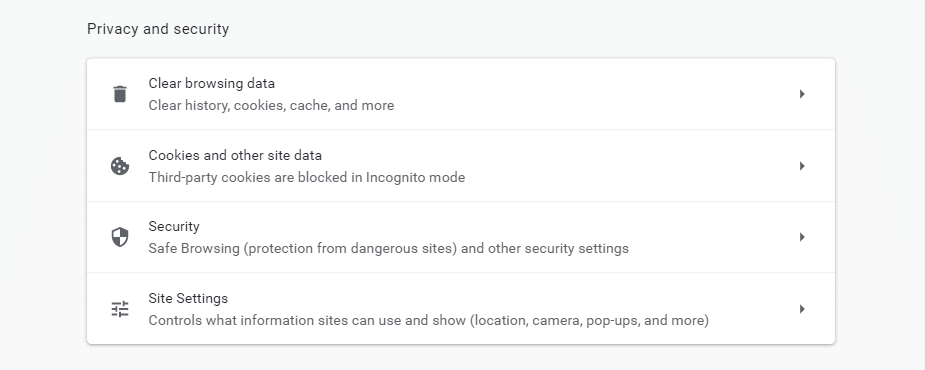
On the next screen, under the Permissions settings, click on Notifications:
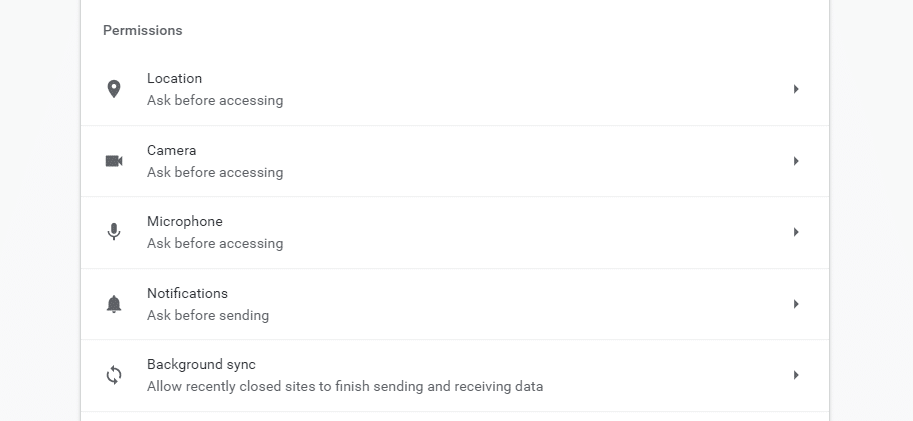
To turn off all notifications, disable the option that says Sites can ask to send notifications. This will prevent websites from showing you requests to send push notifications:

If you click on the Add button, Chrome lets you enter specific URLs from which to block notices. There’s also a counterpart setting for whitelisting websites, which you can reach by scrolling to the bottom of the screen:

By combining all three settings, you can make it so that websites are unable to send you distracting permission requests. You can also whitelist only the URLs that you want to see notices from.
How to Turn Off Push Notifications in Safari
Disabling push notifications in Safari is rather straightforward. To do so, access the Preferences Websites > Notifications settings within your browser. Once you’re in, you’ll see a list of websites that have requested permission to send you push notifications:
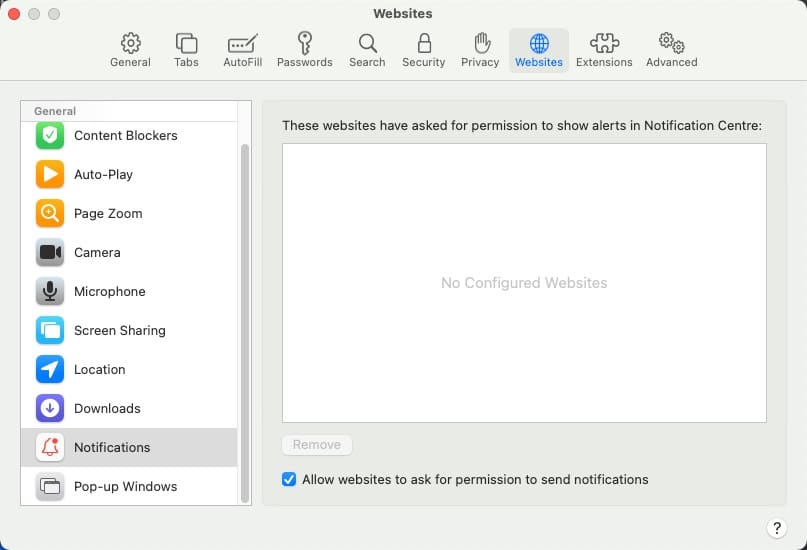
You can disallow notifications from specific websites through that list and vice versa. You’ll also notice an option that reads Allow websites to ask for permission to send push notifications at the bottom of the Notifications window.
Turning off that option will prevent sites from requesting permission to send you notifications.
How to Turn Off Push Notifications in Mozilla Firefox
With Firefox, you can block websites from sending you push notifications, whitelist exceptions, and disable all of them temporarily.
To access Firefox’s notifications settings, navigate to Options > Privacy & Security, and look for the Notifications option under Permissions:
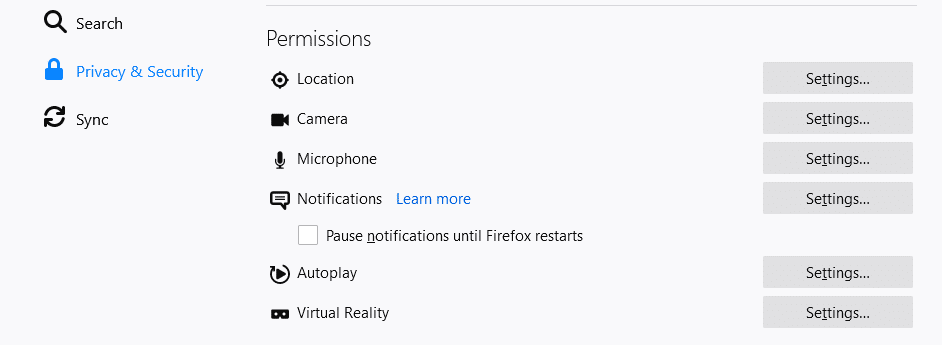
To disable push notifications until you restart the browser, tick the option that says Pause notifications until Firefox restarts.
For more control over pop-up alerts and messages, click on the Settings button to the right of the Notifications option. A window will open with a list of all the websites that have requested permission to send you push notifications:
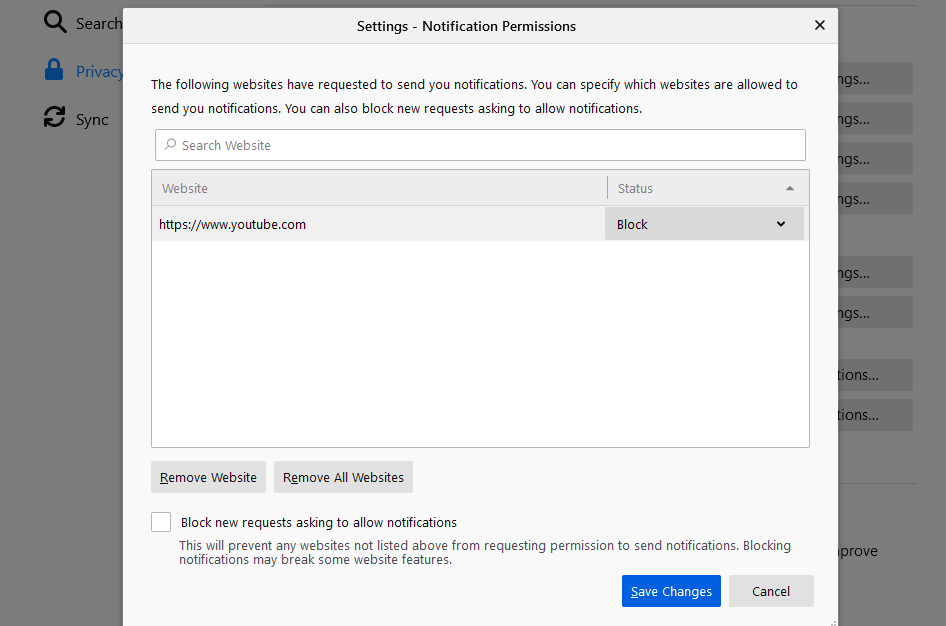
For each website, you can select whether to block or allow notifications. There are also options to remove individual sites from the list, or purge it entirely.
Finally, Firefox lets you block new requests for push notifications by enabling the Block new requests asking to allow notifications feature, located at the bottom of the window.
How to Turn Off Push Notifications in Microsoft Edge
As with most other browsers, Microsoft Edge provides a variety of methods for disabling, blocking, and whitelisting notifications. The browser also includes a feature called Quiet notifications, which bundles all push notifications under an icon so that they don’t interrupt you. You can review them at any time.
To access Edge’s notifications settings, go to Settings > Cookies and site permissions, and select the Notifications option:
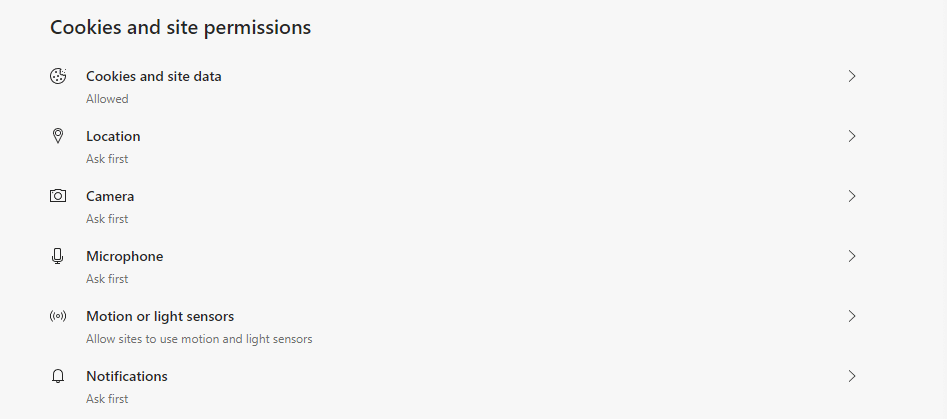
On the next screen, disable the Ask before sending option if you want to turn off push notifications in Edge altogether.
If you’d rather block or allow certain websites, you can click on the Add buttons next to each setting:
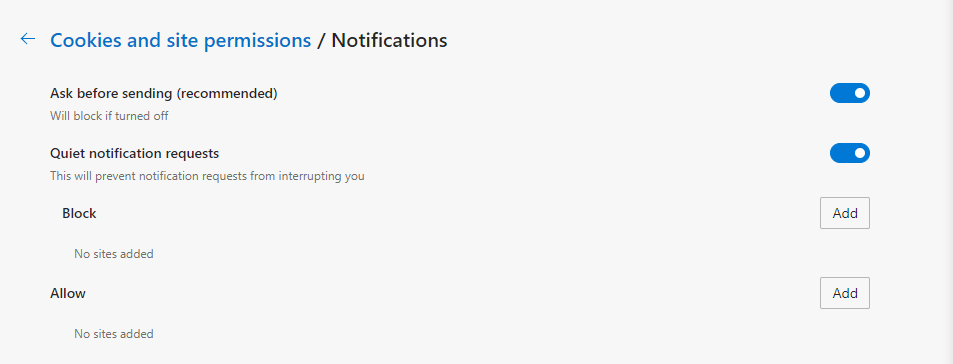
You’ll also notice the Quiet notifications requests option, which should be turned on by default. With that setting enabled, notifications won’t interrupt you while using the browser.
How to Turn Off Push Notifications in Facebook
Although Facebook is neither an OS nor a web browser, it’s one of the most popular social media platforms in the world. As such, we get a lot of questions about how to disable push notifications so that the alerts don’t interrupt your browsing experience.
To access Facebook’s push notifications settings, go into Settings & Privacy > Settings > Notifications. You’ll gain access to a list of all the types of notifications Facebook can send, and you can choose which ones to disable:
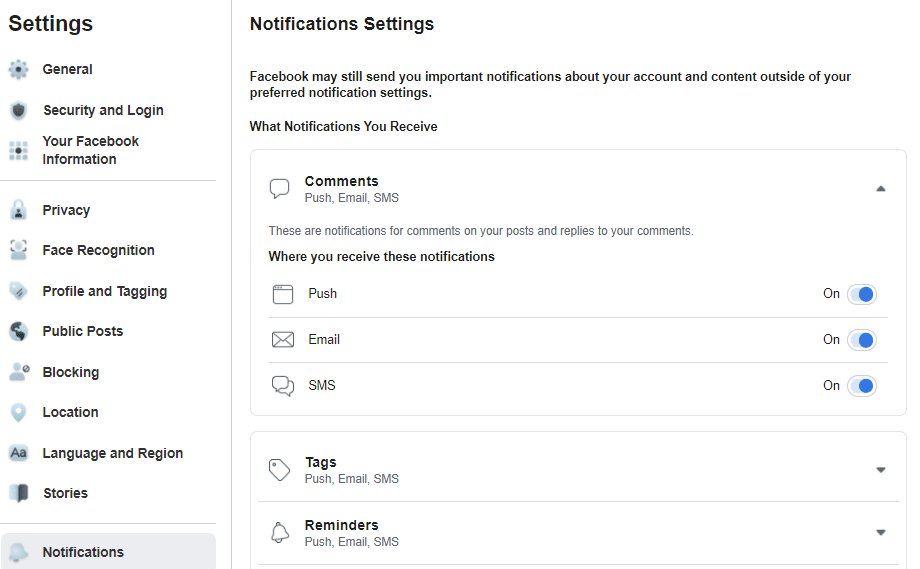
Keep in mind that Facebook uses a handful of notification types. For each option on that list, you can turn off notifications across different channels including push elements, email, and even SMS.
If you want to completely disable notifications, scroll down to the How You Get Notifications section. Expand the Browser menu, and you should see your default browser appear under Push Notifications:
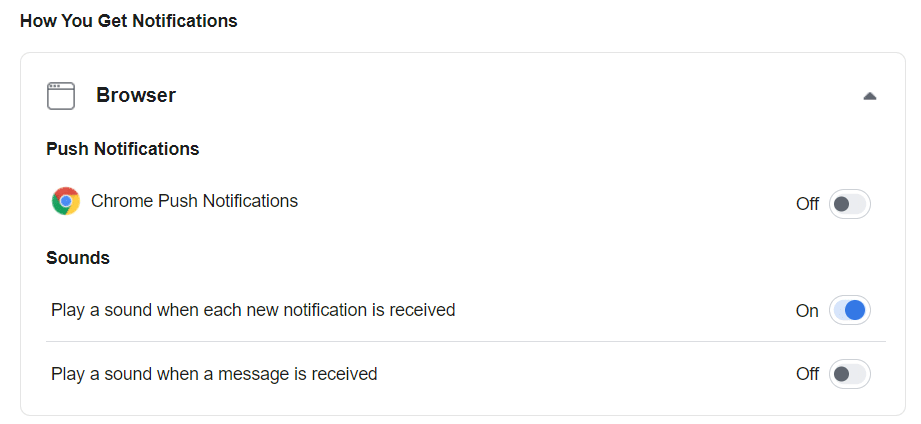
You can disable Facebook browser push notifications here, as well as the sounds that accompany them.
How to Turn Off Push Notifications in Gmail
If you use Gmail, you may also want to prevent the push email notifications from appearing on your desktop. Whether you use Chrome, Firefox, Safari, or another browser, the process for disabling these messages is the same.
First, open Gmail and click on the gear icon in the top right corner, followed by See all settings. Scroll down to the Desktop notifications section:

Select the Mail notifications off option.
When you’re done, click on the Save Changes button at the bottom of the page.
Summary
Although push notifications can be incredibly useful, they are productivity killers. Ideally, you’ll decide which applications and websites can send you push notifications, so you have full control over the notices that you see.
Customizing the way push notifications work is simple. Just about every browser, app, device, and OS offers settings that enable you to customize this feature to suit your unique needs.


